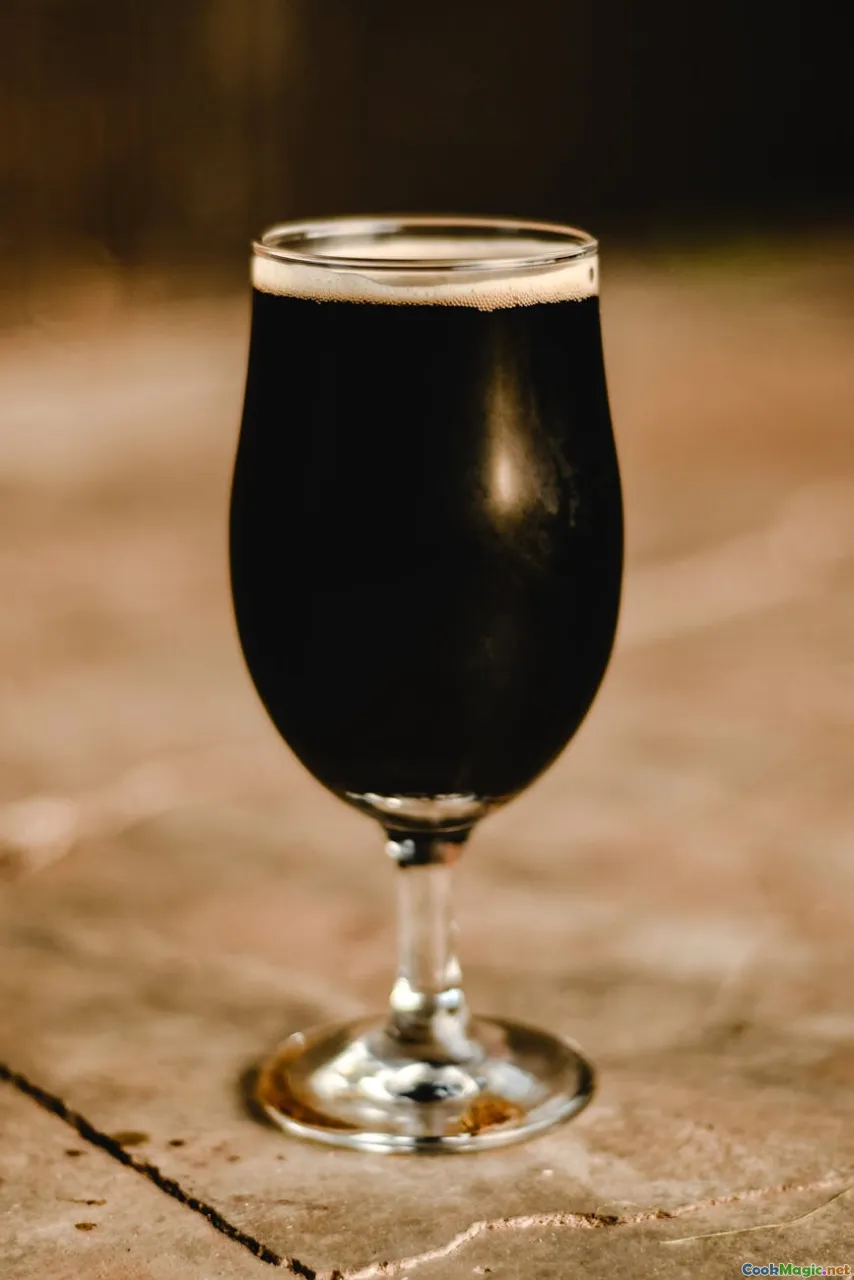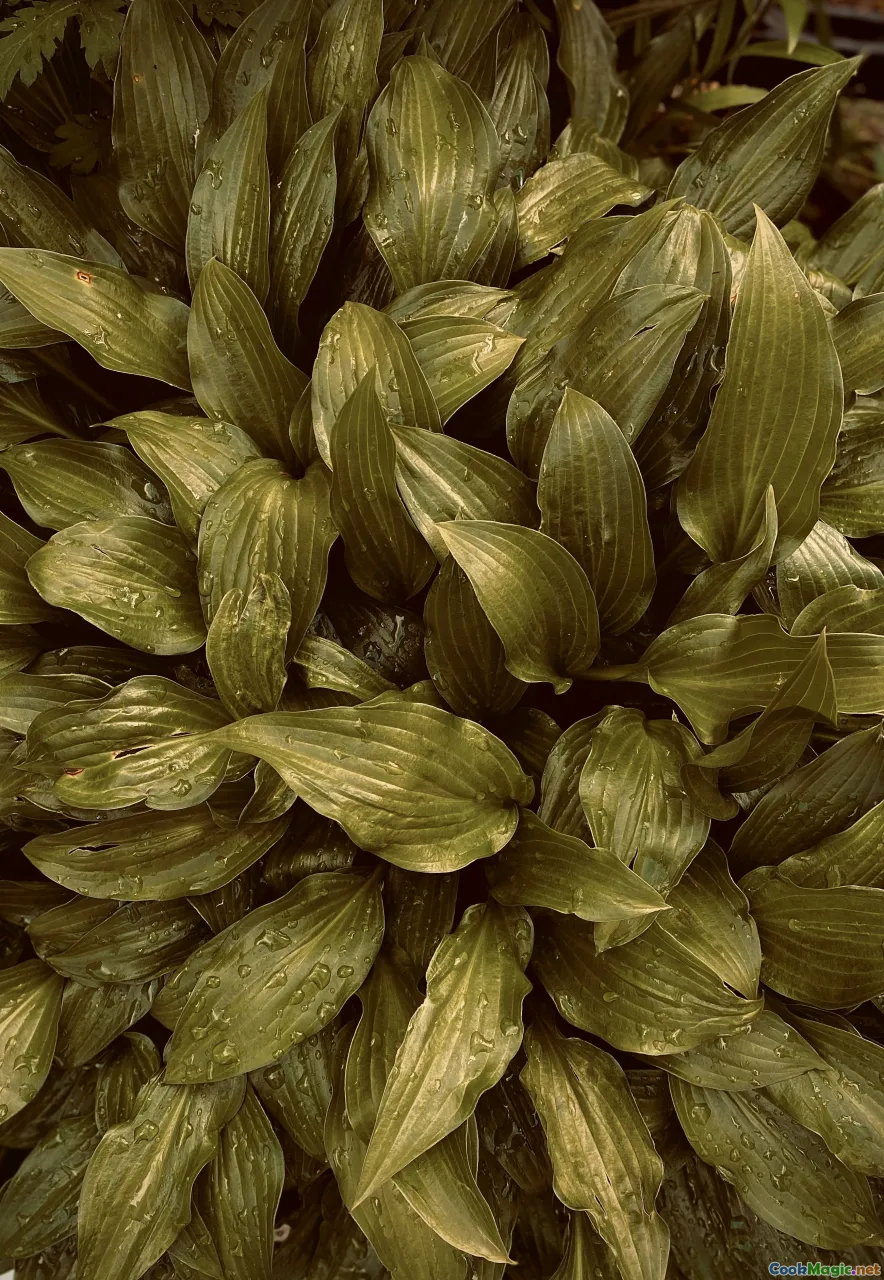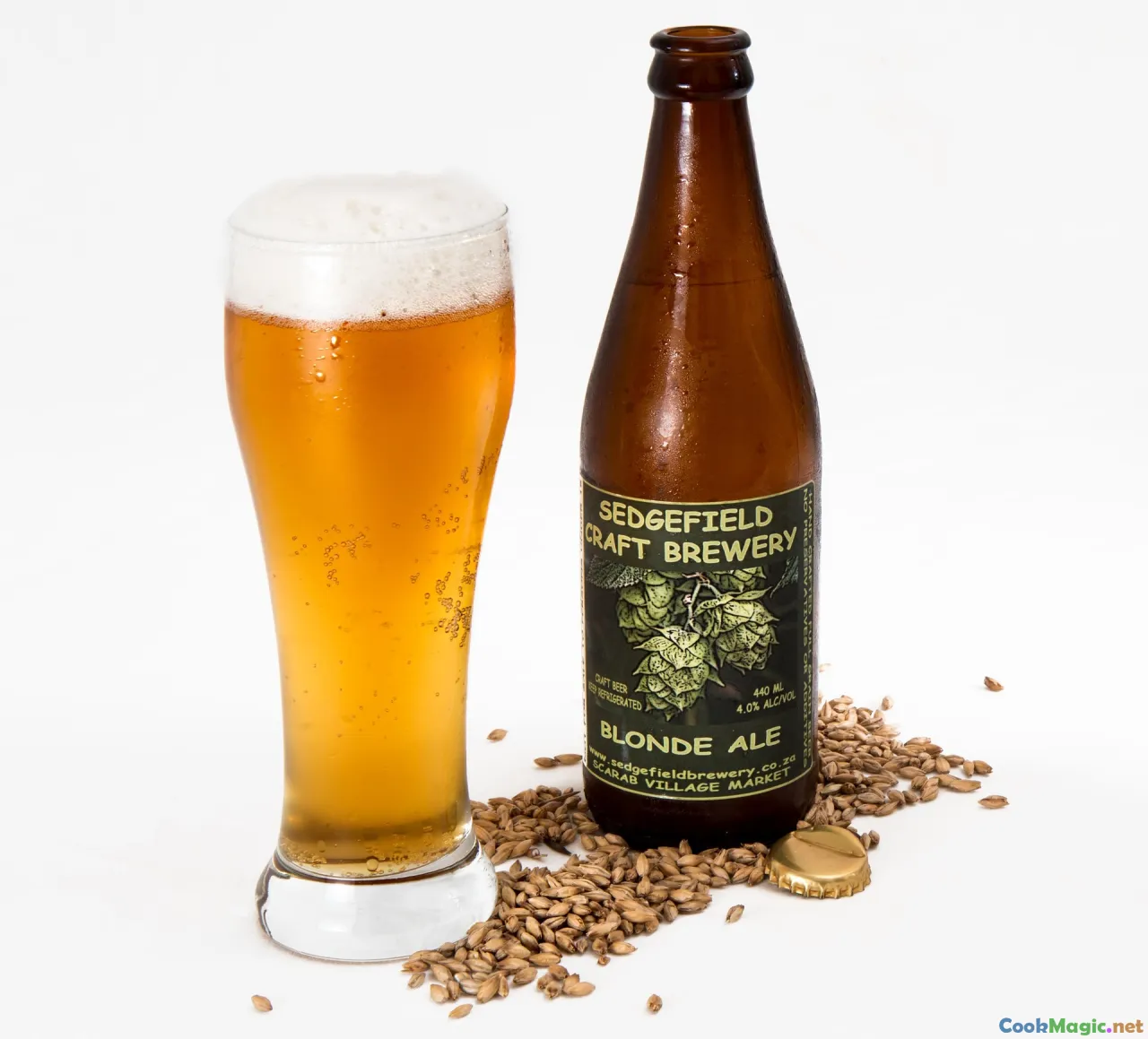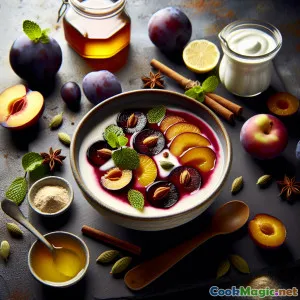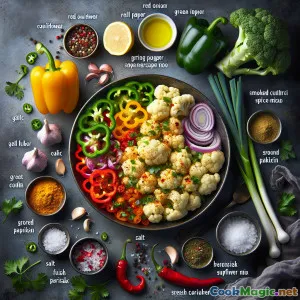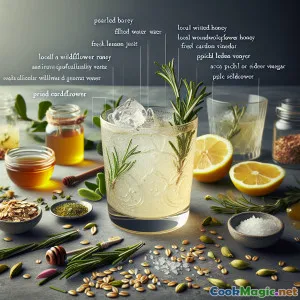
Refeitório Sagrado de Grãos: Elixir de Cerveja de Cevada com Ervas
(Sacred Grain Refectorium: Barley Ale Herb Elixir)
(0 Avaliações)0
22
agosto 24, 2025
Reportar um problema
Ingredientes
-
80 grams Cevada perolada
(Gives malty, nutty base typically used in traditional English brewing.)
-
1 liter Água filtrada
(For brewing barley and infusing flavors.)
-
40 grams Mel de flores silvestres local
(For sweetness and floral notes.)
-
2 sprigs Ramos de alecrim fresco
(Herbal depth; can substitute sages or thyme.)
-
1 teaspoon raspa de limão fresco
(Adds bright citrus aroma.)
-
4 pods Sementes de cardamomo verde
(Adds spice and pleasant bitterness.)
-
10 grams Flor de sabugueiro seca
(Optional: floral note, traditional English ingredient.)
-
1 tablespoon Vinagre de maçã
(Lends tartness that recalls traditional small ales.)
-
1 pinch pitada de sal marinho
(Balances flavors.)
Gelo triturado ou água com gás gelada, as desired
(Gives malty, nutty base typically used in traditional English brewing.)
(For brewing barley and infusing flavors.)
(For sweetness and floral notes.)
(Herbal depth; can substitute sages or thyme.)
(Adds bright citrus aroma.)
(Adds spice and pleasant bitterness.)
(Optional: floral note, traditional English ingredient.)
(Lends tartness that recalls traditional small ales.)
(Balances flavors.)
Nutrição
- Porções: 4
- Tamanho da Porção: 1 mug (200 ml)
- Calories: 108 kcal
- Carbohydrates: 24 g
- Protein: 2 g
- Fat: 0.5 g
- Fiber: 2 g
- Sugar: 10 g
- Sodium: 70 mg
- Cholesterol: 0 mg
- Calcium: 15 mg
- Iron: 0.8 mg
Instruções
-
1 - Toast Barley:
Spread the barley on a dry skillet over medium heat and stir for about 5 minutes or until lightly toasted; this amplifies its aroma and flavor.
-
2 - Simmer Barley:
Add toasted barley to a pot with 1 liter of filtered water. Simmer over medium-low heat for 25 minutes (covered), allowing grains to release flavor.
-
3 - Infuse Herbs & Spice:
Add rosemary, cardamom, lemon zest, and elderflower (if using). Let steep with the barley for the last 5 minutes of simmering. Remove from heat.
-
4 - Strain & Add Honey:
Pour the liquid through a fine-mesh sieve into a large jug, discarding solids. Stir in the honey, sea salt, and apple cider vinegar while the blend is warm for full dissolution.
-
5 - Serve:
Chill in refrigerator or pour over crushed ice. Garnish with extra lemon zest or a rosemary sprig. For effervescence, top with a splash of seltzer before serving.
Spread the barley on a dry skillet over medium heat and stir for about 5 minutes or until lightly toasted; this amplifies its aroma and flavor.
Add toasted barley to a pot with 1 liter of filtered water. Simmer over medium-low heat for 25 minutes (covered), allowing grains to release flavor.
Add rosemary, cardamom, lemon zest, and elderflower (if using). Let steep with the barley for the last 5 minutes of simmering. Remove from heat.
Pour the liquid through a fine-mesh sieve into a large jug, discarding solids. Stir in the honey, sea salt, and apple cider vinegar while the blend is warm for full dissolution.
Chill in refrigerator or pour over crushed ice. Garnish with extra lemon zest or a rosemary sprig. For effervescence, top with a splash of seltzer before serving.
Mais sobre: Refeitório Sagrado de Grãos: Elixir de Cerveja de Cevada com Ervas
Sacred Grain Refectorium: Full Recipe Insight
The Sacred Grain Refectorium is not merely a beverage, but a resurrected spirit of ancestral English refectories, monasteries, and rustic farmhouses, carefully crafted for the modern palate. Barley-based drinks have deep roots in Britain's culture, predating both widespread tea drinking and the hoppy ales of today. Likened to a medieval non-alcoholic ale or an ancient health tonic without the fermentation or alcohol, Sacred Grain Refectorium is both a homage and an update: the taste is robust and herbaceous, malty from barley, aromatic with rosemary and cardamom, and bright with lemon.
Historical & Cultural Value
Barley was the backbone of rural and monastic English cookery for centuries. Home-brewed 'small beer'—a faintly alcoholic, nourishing drink—kept people hydrated when water was suspect and energized with simple grains. Barley stews and pottages also lined the refectory tables of medieval monasteries. This drink spins that essence into an accessible, healthful elixir that everyone can appreciate, no brewing skills needed.
Elderflower and rosemary—staples in English hedgerows and herb gardens—evoke both medicinal tonics and the subtle luxury of country manor kitchens. Paired here with zesty lemon peel and a lift of green cardamom, Sacred Grain Refectorium develops a beautiful bouquet that’s elegant yet earthy.
Unique Aspects & Personal Notes
- Non-Alcoholic, But Crafty: Boiling instead of brewing extracts wholesome goodness while offering the flavor clarity of ale, without the hassle (or wait) of fermentation.
- Gourmet Mocktail Potential: Served chilled, garnished, or even topped with sparkling water, this drink will astonish guests seeking aperitivo sophistication sans alcohol.
- Vegan-Friendly Option: By replacing honey with agave syrup or unrefined sugar, vegans can partake in this age-old reimagining.
- Versatility: You can swap out wildflower honey for heather honey for bolder taste, or even maple syrup in a pinch.
- Seasonal Adjustments: Swap rosemary for mint in summer or thyme in autumn for different aromatics. Elderflower flourishes in early summer but can be omitted or replaced with other dried edible flowers.
Tips & Serving Suggestions
- Toast Barley Lightly: Avoid burning to maintain mild, bready flavor.
- Infusion Time: Don’t steep herbs for too long—5 minutes is ample for vibrancy but not bitterness.
- Cooling: Rapid-chill over ice for clarity, or refrigerate if prepping in advance.
- Dilution: For a subtler drink, add cold filtered water or more seltzer right before serving.
- Presentation: Serve in earthenware mugs, stoneware tumblers, or even chilled pint glasses for an authentic medieval or cozy pub vibe.
Health and Nutrition
Barley’s soluble fiber supports digestion, while the antioxidant and subtle antimicrobial properties of rosemary, elderflower, and cardamom lend wellness. With only about 108 calories a mug (mainly from barley and honey), it’s refreshingly light but gently nourishing akin to an old-world tonic.
Final Thoughts
The Sacred Grain Refectorium provides a rare liquid bridge to England’s botanical and agrarian past—thoughtfully reworked for 21st-century kitchens. Whether shared at a dinner party, whisked in a carafe for quiet reflection, or chunked over ice as a study snack, the brew both honors tradition and tastes positively modern. This drink delivers the poetic granary sense of being rooted in place, history, and ritual—mysterious yet comforting, a secret worth revisiting over many cups.

